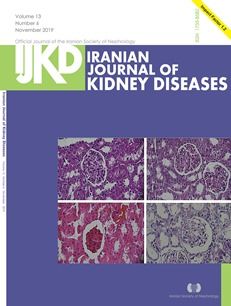Dominance of Variant Human Herpesvirus 6 A Among Hemodialysis Patients, Ahvaz, Iran
Abstract
Introduction. Hemodialysis (HD) patients are a high-risk population for acquiring blood-borne viruses such as HHV-6. HHV-6 can remain latent in the host cells after primary infection; the reactivation of virus may result complications such as seizure, respiratory failure, hepatitis, and encephalitis. There is a limited report concerning HHV-6 infection in HD patients in Iran. Thus, this study was conducted to determine the frequency of HHV-6 among HD patients.
Methods. We determined HHV-6 DNA in sera samples of 84 patients undergoing HD. The DNA was extracted from the sera samples and the presence of HHV-6 DNA variants A and B was evaluated by nested PCR.
Results. 52/84 (61.9%) of HD patients were males and 32/84 (38.1%) females. The age ranges of patients were between 18 to 85 years and the mean age was 52 ± 1.52 (± SD) years. Out of 84 sera samples, HHV-6 DNA was detected in 10 (11.9%) participants, including 6/52 (11.5%) in males and 4/32 (12.5%) in females. HHV- 6A was detected in 10/10 (100%) of positive cases. No HHV-6 B was found in HD patients. The distribution of HHV-6A DNA was not significant between genders (P > .05). Out of 84 HD patients, 55 (65.47%) cases were over 50 years, among them 10 (18.18%) cases were positive for HHV-6 A infection (P < .05).
Conclusion. The results showed that only HHV-6 DNA variant A was found in 11.9% of HD patients. Regarding the consequence of HHV-6 reactivation, to manage and improve treatment, the screening of HHV-6 DNA test should be implemented for HD patients.


